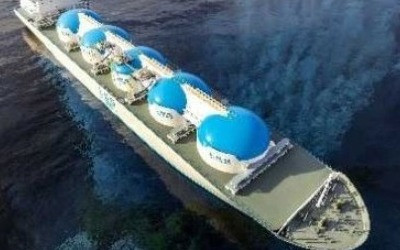April 06, 2023

As the world continues to experience the effects of climate change, governments and organizations have made a lot of noise about reducing their greenhouse gas emissions and transition to cleaner forms of energy. How much of the talk turns into action will be critical for the future of our industry and our world.
Arash Roknian is leading Petroplan’s Clean Energy business in the US, as it becomes a larger part of the organization’s overall business model.
“As a recruiter, I’m drawn to clean energy because it represents a huge opportunity for innovation and economic growth,” says Arash.
“The clean energy sector is one of the fastest-growing industries in the world, with tremendous potential for job creation and economic development.”
Arash acknowledges that the pace of change can never be fast enough, given the urgency and what’s at stake.
“When we look at the progress that has been made so far, as well as some of the challenges that remain, it’s clear there’s a long way to go.”
One of the most significant signs of progress has been the rapid growth of renewable energy sources. According to the International Energy Agency, renewable energy sources such as wind and solar power accounted for 72% of global electricity generation capacity additions in 2020. This number continues to grow.
In fact, renewable energy sources are now the second-largest source of electricity worldwide. This growth has been driven by falling costs and government incentives, as well as increasing awareness of the need to address climate change.
Another positive development has been the increasing adoption of electric vehicles. While it’s still a small percentage of the overall vehicle market, sales of electric vehicles have been growing rapidly in recent years.
“We’re looking at up to 25% of new cars being electric by 2025,” Arash says.
“This growth is expected to continue as more automakers introduce new electric models and governments implement policies to encourage their adoption”
Despite these positive developments, there are still significant challenges in the energy transition. While renewable energy sources are growing rapidly, they still only account for a small percentage of total energy consumption.
“Another challenge is the need to upgrade and modernize electricity grids,” he says.
“Renewable energy sources such as wind and solar power are intermittent, meaning that they are not always available when needed. This requires a flexible and resilient electricity grid that can balance supply and demand in real-time.”
A major aspect of his team’s current activities is Hydrogen, where the US is making a huge push in development.
“It is a particularly exciting energy source for a number of reasons, including its high energy content, its versatility, and its potential to be produced from renewable sources.”
Hydrogen has a very high energy content per unit of weight, making it an extremely efficient fuel. It has three times more energy per unit of weight than gasoline, and when burned, it produces only water vapor as a byproduct. This makes hydrogen a very clean-burning fuel, with no emissions of pollutants or greenhouse gases.
Hydrogen is a very versatile energy source. It can be used in a variety of applications, including fuel cells for vehicles and power generation, industrial processes, and heating. It can also be used as a feedstock for the production of chemicals and other materials.
Hydrogen also has the potential to be produced from renewable sources such as solar, wind, and hydro power through a process called electrolysis. This involves using electricity to split water molecules into hydrogen and oxygen. When renewable energy is used to power the electrolysis process, the resulting hydrogen is completely carbon-free and emits no greenhouse gases.
Despite these challenges involved in production and storage, there is growing excitement around its potential as a clean, versatile, and efficient fuel.
Finally, there is the challenge of ensuring that the energy transition is equitable and just.
“The shift to renewable energy sources has the potential to create new jobs and economic opportunities, but it also has the potential to disrupt existing industries and communities. It is important that the transition is managed in a way that takes into account the needs and concerns of all stakeholders, including workers in the fossil fuel industry.”
Arash himself has been working in recruitment for ten years. After beginning his career in London, he transitioned to Houston four years ago, looking to take a role in one of the key battlegrounds of the energy transition.
“As a millennial, I’m acutely aware of the urgent need to address climate change and transition to a more sustainable, clean energy future. For me, working in clean energy is not just a job, it's a way to make a real difference and help build a better world.”
“Finally, I am drawn to clean energy because it offers the opportunity to work with a diverse range of people from different backgrounds and disciplines. The transition to clean energy is a complex, interdisciplinary challenge that requires collaboration and cooperation across a wide range of fields, from engineering and science to policy and finance. I believe that diverse teams are more innovative and effective, and I am excited about the prospect of working with people from different backgrounds and perspectives to find creative solutions to the challenges of the clean energy transition.”
The renewable energy sector will continue to grow in the coming years, with the potential to create up to 42 million jobs globally by 2050. However, this growth will depend on supportive policies and investment in the sector, as well as the continued development and deployment of renewable energy technologies.
“We’re all excited about the possibilities. We just need to make sure we’re moving fast enough.”






You can also use your social account to sign in. First you need to:
To connect your social account you must Acknowledge the Terms & Conditions and Privacy Policy